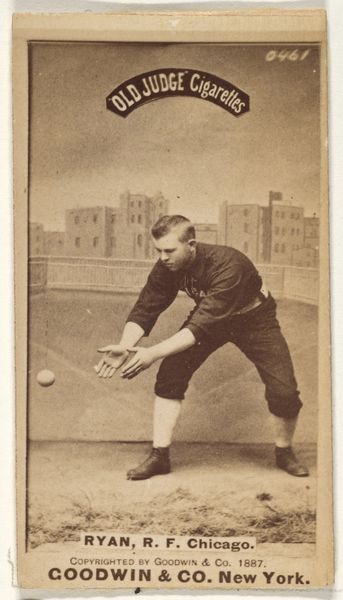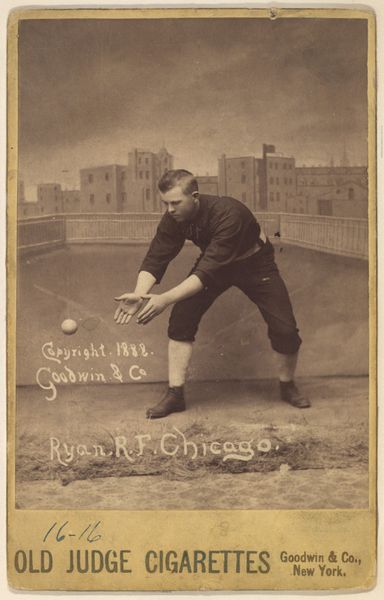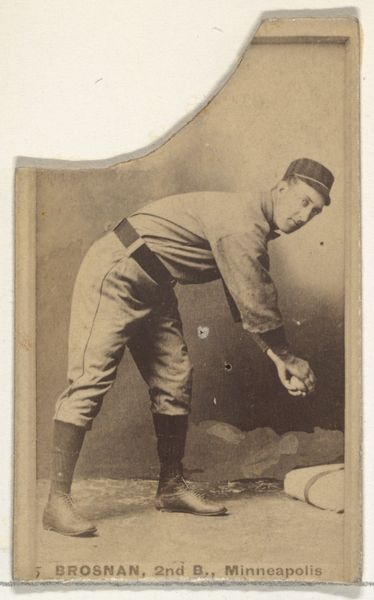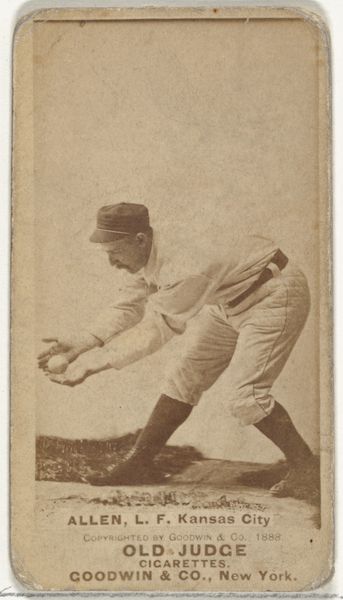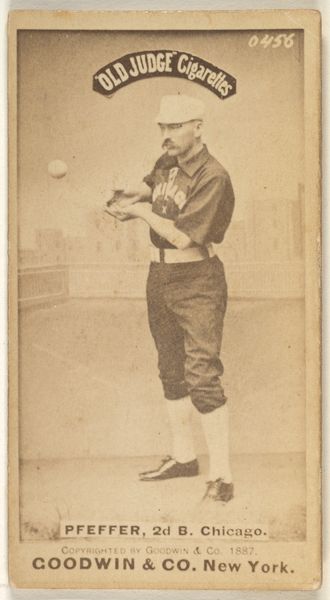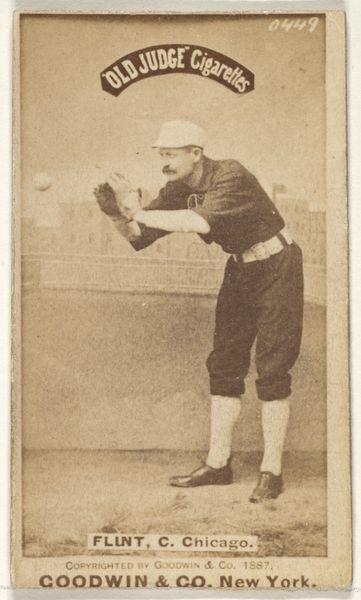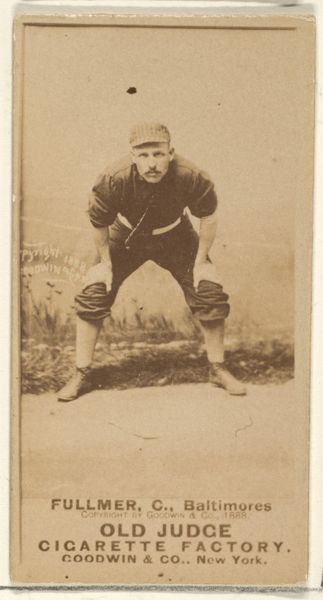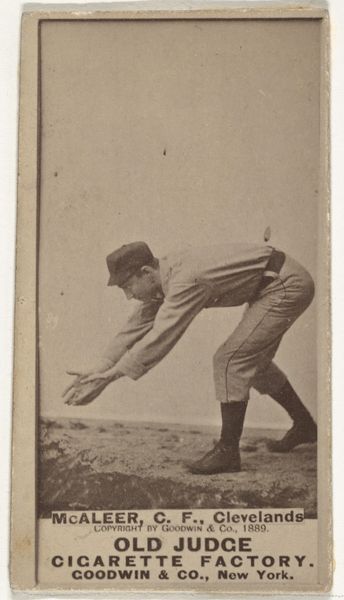
Ryan, Right Field, Chicago, from the Old Judge series (N172) for Old Judge Cigarettes 1888
0:00
0:00
print, photography, albumen-print
#
portrait
# print
#
impressionism
#
baseball
#
photography
#
historical photography
#
men
#
genre-painting
#
athlete
#
albumen-print
Dimensions: sheet: 2 11/16 x 1 3/8 in. (6.9 x 3.5 cm)
Copyright: Public Domain
Editor: Here we have "Ryan, Right Field, Chicago" from the Old Judge series, made in 1888 by Goodwin & Company. It's an albumen print, giving it this lovely sepia tone. It feels so posed, stiff even, for a sports image. What do you see in it? Curator: The albumen print presents us with a study in tonal range. Notice how the mid-tones dominate, creating a flattened pictorial space. Observe also the way the composition uses a shallow depth of field. How does that inform our understanding of the subject? Editor: It makes the athlete stand out more, since everything else is less focused. Almost like a stage. It’s also really cool that the athlete and baseball diamond form a triangle. Curator: Precisely. Consider the lines: The geometry guides our eye. What is the effect of the high horizon line of the background wall? Editor: It’s not in focus and contrasts sharply with the lines in the foreground and keeps our eyes on him. I'm also seeing all of the rectangles that mirror one another -- on the buildings behind the field, but also printed text about the photo. Curator: Indeed. And how do these geometric shapes inform the overall sense of stability and perhaps confinement within the frame? There is no real use of depth within the work so this flattens the athlete too. Editor: It really does look staged! So the formal elements of the print, the composition, the tonal range… they contribute to this sense of Ryan being presented almost as an object himself? I hadn't considered it that way. Curator: Precisely. By considering only the object, one avoids a contextual analysis that can undermine a true aesthetic experience.
Comments
No comments
Be the first to comment and join the conversation on the ultimate creative platform.
